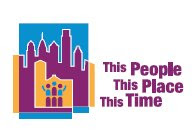Key Question: “Why do we need an elevator?”
Jesus honored the sometimes creative efforts made by and on behalf of those whose limitations made access to him difficult. Consider the blind beggar who would not be silenced. He strategically placed himself in Jesus’ path, crying “Jesus, son of David, have mercy on me!” (Luke 18:35–43). There is the woman whose bleeding made her an outcast but nevertheless had the temerity to pick her way through the crowd to be healed by touching the hem of Jesus’ robe (Luke 8:42–48). How about the compassion of Jesus for the invalid who could find no one to help him enter the healing pool? (John 5:1–8). Or the hated, diminutive tax collector who climbed the sycamore tree so he could personally see Jesus? (Luke 19:1–10). And then there is the example of extreme renovations: the resourceful efforts of four men who made it possible for their paralytic friend to be lowered through the roof to Jesus and hear his words, “Take up your bed and walk!” (Mark 2:1–12).
A major portion of the Capital Campaign is earmarked toward fulfilling a commitment that was made more than 10 years ago—to provide elevator access to areas of the facility that are presently inaccessible to those with physical limitations. The elevator will be located on the south wall of Reception/Fellowship Hall between the Middle Building and Delancey Building, thereby improving exterior wheelchair access as well as access to the Catacombs, Sanctuary, Fellowship Hall, Reception Hall, and the first three levels of the Delancey Building. This is an expensive endeavor which will negatively impact space that is already at a premium. Why then are we planning an elevator, and why at that location?
The Session has a long-standing but as yet unrealized commitment to an elevator. The Building Committee conducted an Access Survey in 2006 and found no shortage of members requiring physical assistance. Some members of our congregation can no longer serve the Tenth community simply because stairs bar their way. Statistics tell us that the fastest growing population is in the oldest age bracket. These are certainly compelling reasons. But more importantly, can there be any doubt that Jesus’ compassion and caring extends to all of his people? Shouldn’t we reflect his character by making it possible for those with physical limitations to participate in worship, education, and fellowship, being blessed in turn with their presence?
Before commencing any construction on the elevator, alternative space will be necessary to accommodate the nursery and pre-school children who will be displaced. This will necessitate finding appropriate rental space so that the needs of all of God’s children can best be met. The
goal of improving access for those with the greatest physical needs while minimizing the impact of lost space is certainly challenging. But God’s call for us to be ministers of his compassionate love demands no less.
And the King will answer them, ‘Truly, I say to you, as you did it to one of the least of these my brothers, you did it to me.’ Matthew 25:40.
If you would like to see diagrams showing the floors accessed by the elevator, click here.
skip to main |
skip to sidebar

This People, This Place, This Time

Subscribe via email
Visitor Count
About This Blog
Important Dates
- September 12 - Dedicatory Organ Concert
- Daily – Ongoing: Band of Gideons upholds the campaign in prayer. Contact George McFarland at gmcfarland@dccs.com if you want to sign-up.
